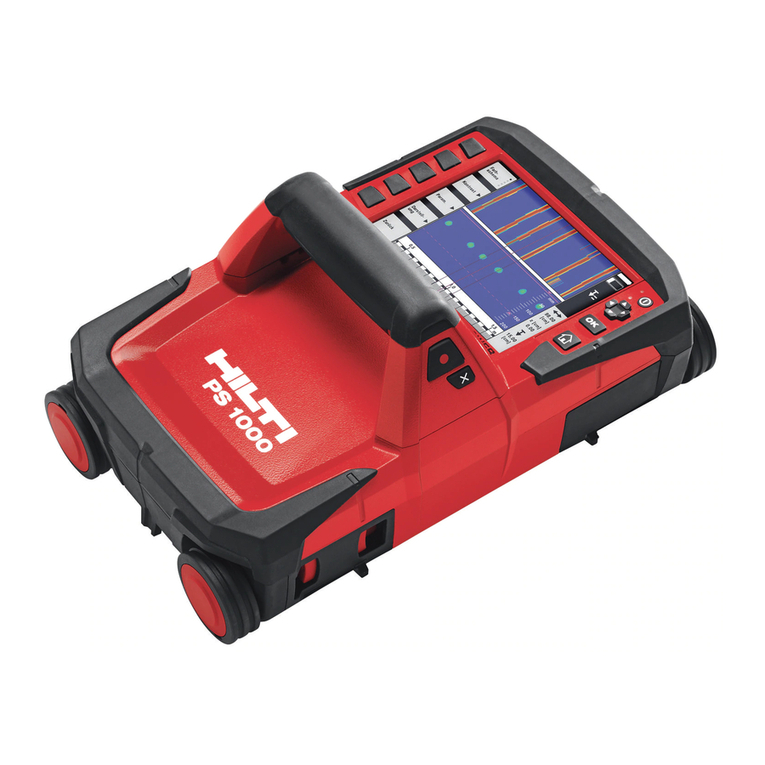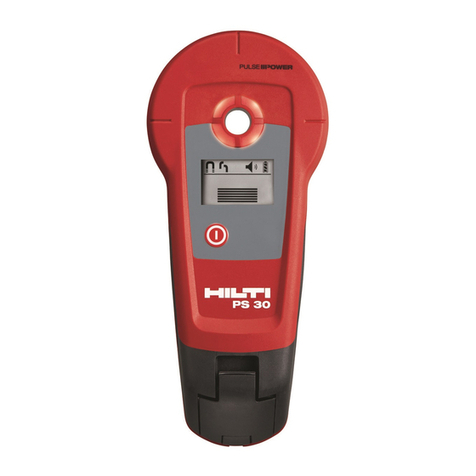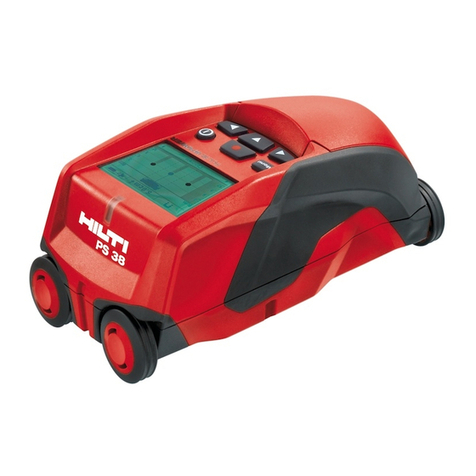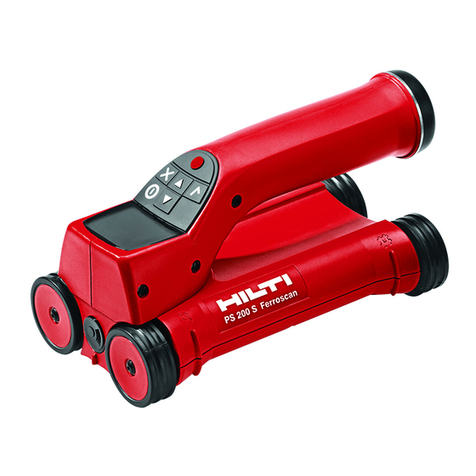7
2. Safety precautions
2.3 Electromagnetic Compatibility (EMC)
Electromagnetic compatibility means the capabi-
lity of the PS 20 to function smoothly in an envi-
ronment of electromagnetic radiation and elec-
trostatic discharges, without causing electroma-
gnetic interference to other equipment.
Interference caused by electromagnetic radiation
can cause disturbances in the PS 20.
Although the PS 20 meets the strict regulations
and standards which are in force in this respect,
Hilti cannot completely exclude the
possibility that interference may be
caused to the PS 20 by very intensive
electromagnetic radiation, e.g. near
welding equipment, diesel generators
etc.
Under such conditions, check measu-
rement results for their plausibility.
The PS 20 may cause disturbance in
other equipment through electroma-
gnetic radiation.
Although the PS 20 meets the strict
regulations and standards which are in
force in this respect, Hilti cannot com-
pletely exclude the possibility that
interference may be caused by the PS
20, e.g. in electronic measuring equip-
ment.
Possible results of misuse
•Safety hazards to life and limb through faulty
measurement results.
•Structural damage,e.g. from drilling into
loadbearing reinforcing bars.
•Damage to the PS 20.
•Reduction of measuring accuracy.
•Warranty is null and void.
•Safety hazards to life and limb through falling
•Safety hazards to life and limb through elec-
tric shock
Misuse, Continued
Hilti products are largely manufactured from
recyclable materials. A prerequisite for recycling
is proper material separation. In many countries
Hilti is already able to accept your used unit for
recycling. Ask your Hilti representative or the
Hilti customer service.
2.5 Disposal
2.4 FCC statement (applicable in U.S.)
WARNING
This equipment has been tested and found to
comply with the limits for a Class II digital
device, pursuant to part 15 of the FCC Rules.
These limits are designed to provide reasonable
protection against harmful interference in a resi-
dential installation. This equipment generates,
uses and can radiate radio frequency energy
and, if not installed and used in accordance with
the instructions, may cause harmful interference
to radio communications. However, there is no
guarantee that interference will not occur in a
particular installation. If this equipment does
cause harmful interference to radio or television
reception, which can be determined by turning
the equipment off and on, the user is encoura-
ged to try to correct the interference by one or
more of the following measures:
-Reorient or relocate the receiving antenna.
-Increase the separation between the equip-
ment and receiver.
-Connect the equipment into an outlet on a cir-
cuit different from that to which the receiver
is connected.
-Consult the dealer or an experienced radio/TV
technician for help.
Component/assembly Main material Utilization
Plastic case Plastic Plastic recycling
Case Plastic Plastic recycling
Cable Copper, elastomer Scrap metal
Electronic parts Various Electronic scrap
or (sensor, charger) scrap metal
Screws, small parts Steel, brass Scrap metal
Manual Paper Waste paper
Battery, rechargeable Nickel, cadmium Battery recycling
(observe special
local regulations)
































